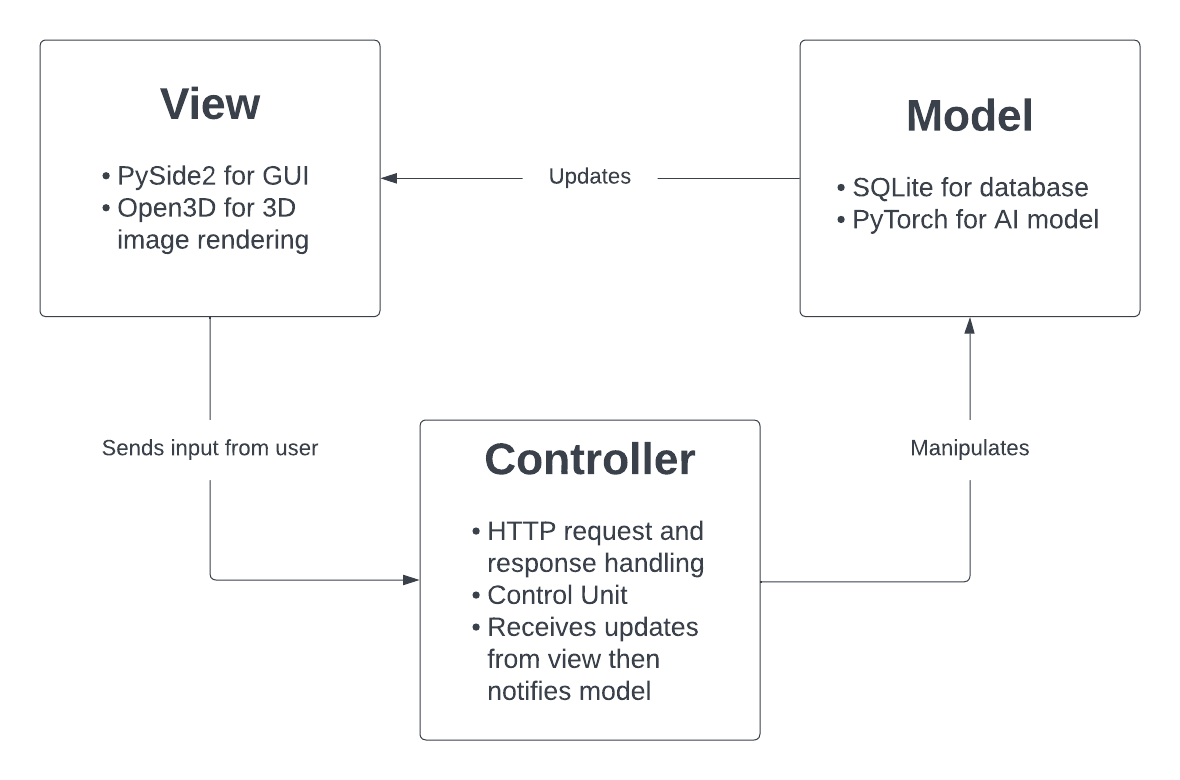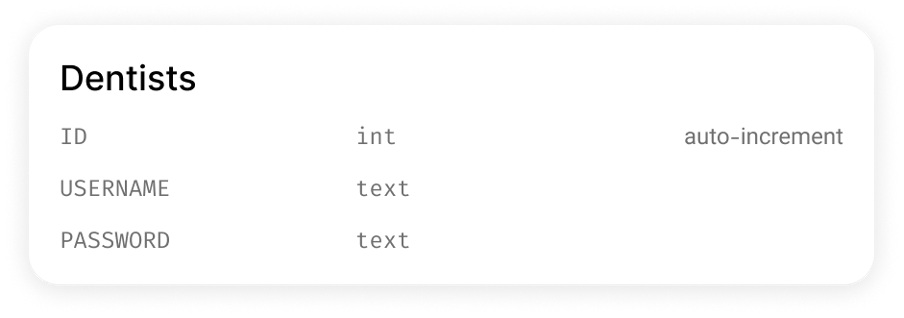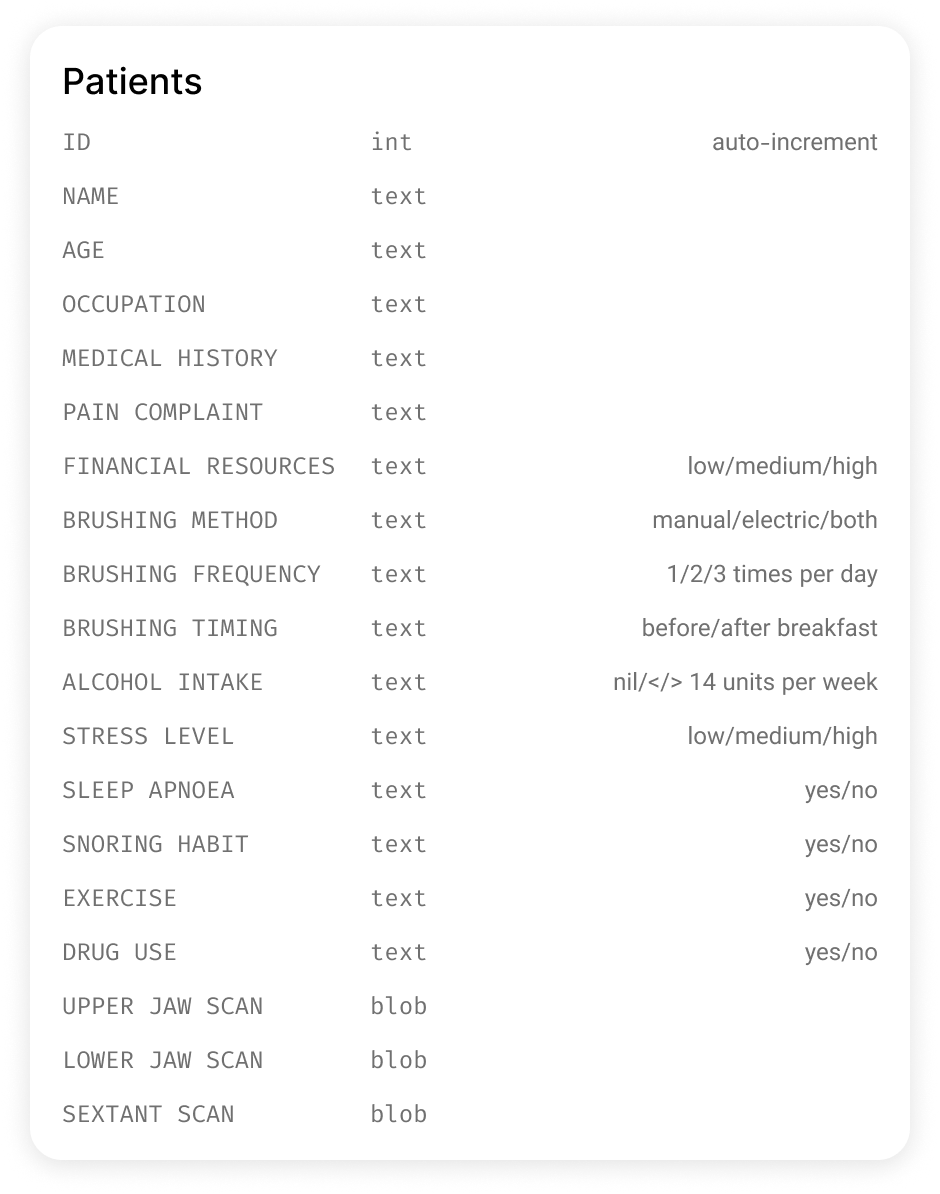System Architecture
This is our general system architecture diagram.
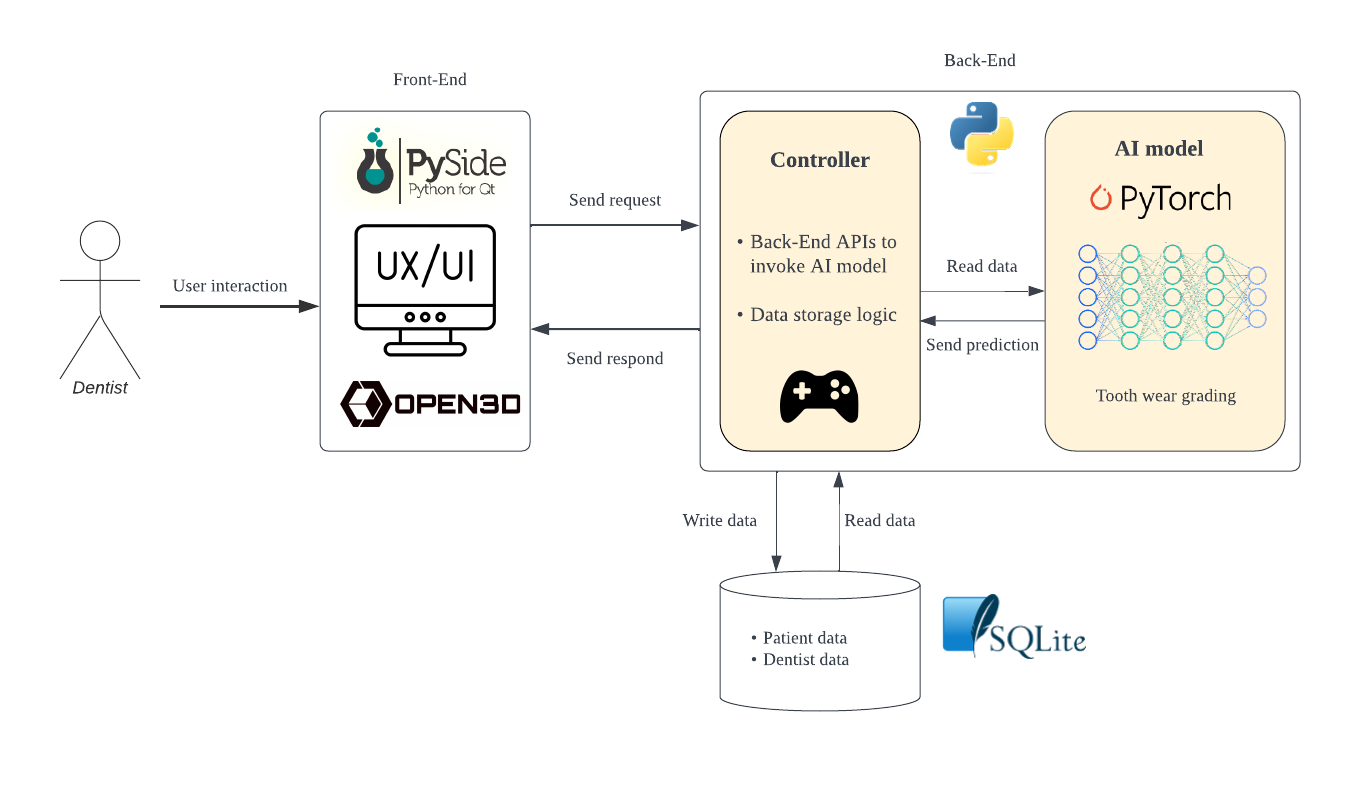
This is a detailed system architecture diagram.
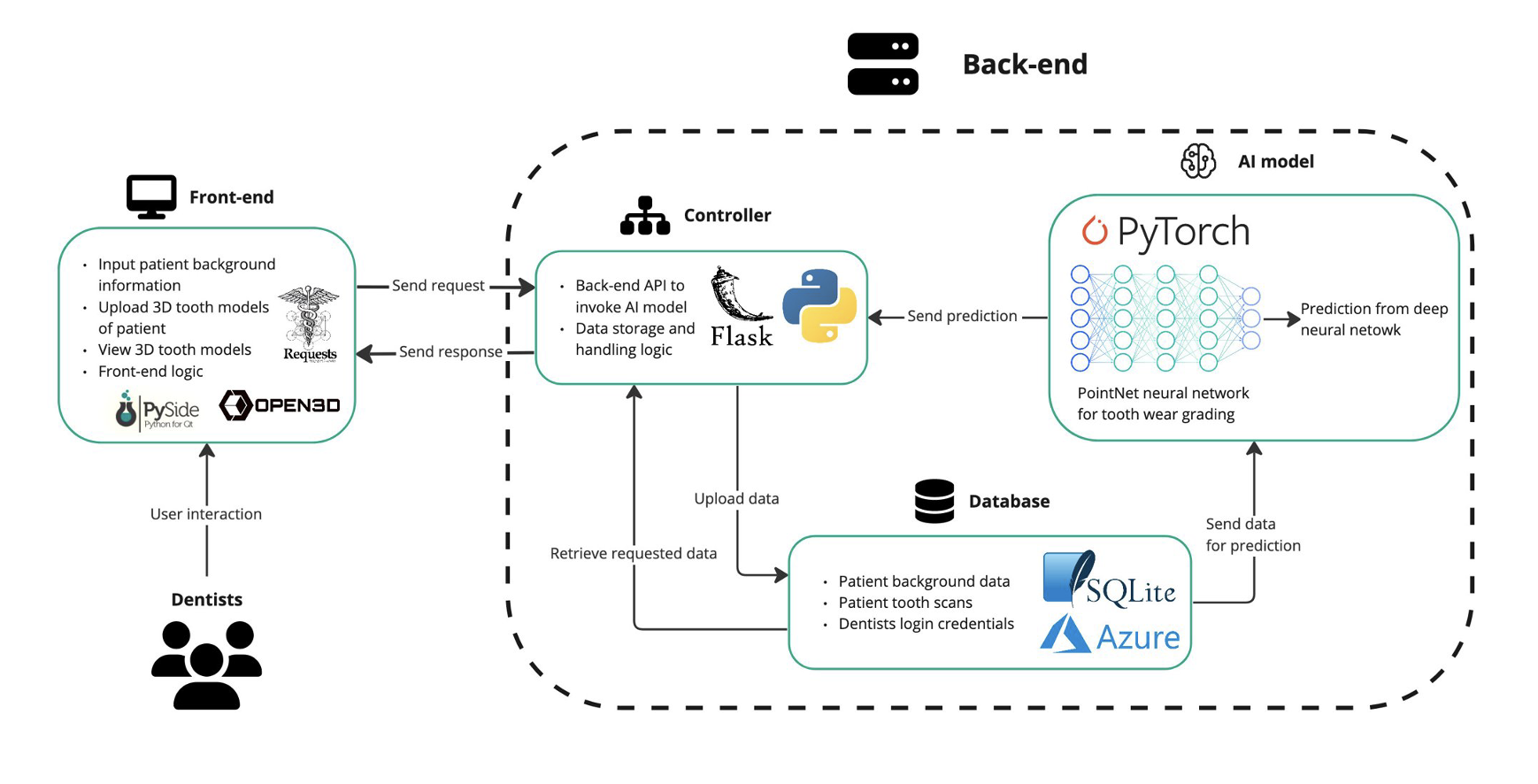
PySide and Open3d is used for the front-end, to build the user interface and to display tooth models in STL/PLY file format. Our front-end UI accepts a patient’s medical background and their 3D tooth scans as input. It provides the interface to interact with the database, view 3D models, and receive prediction results.
Our back-end consists of a controller module which contains the primary back-end logic for mediating requests from the client and generating responses from the rest of the back-end. We use Flask and Python Requests library to handle HTTP response and request, sending and receiving data between the client and server. SQLite is used to store user's credentials and patient's information. Deep learning model for tooth wear grading is implemented with PyTorch.
